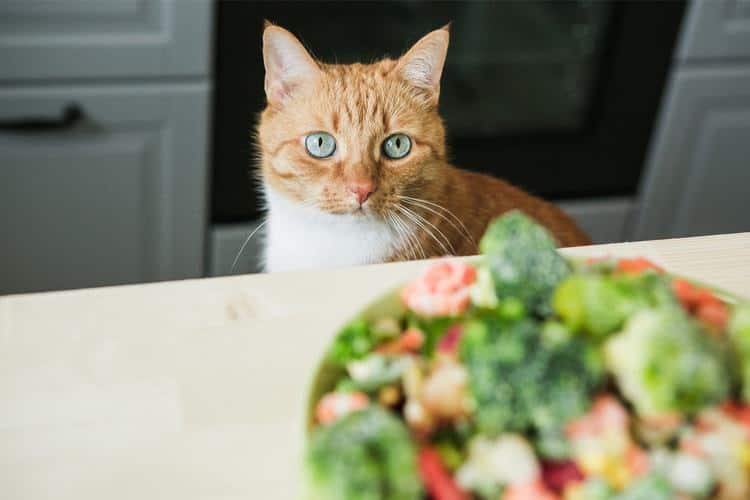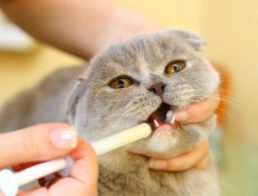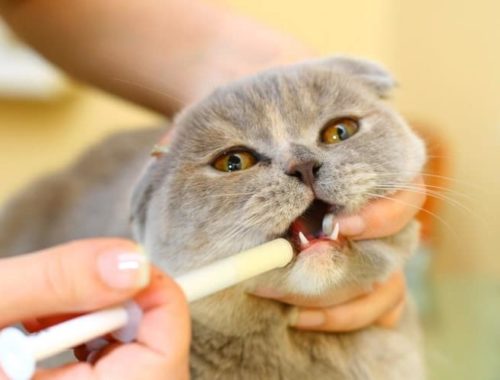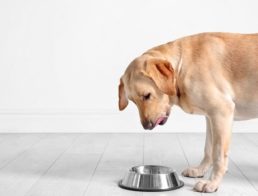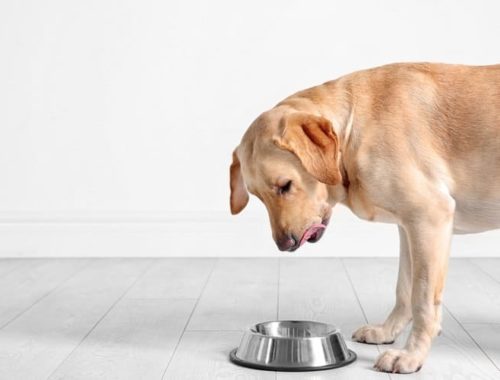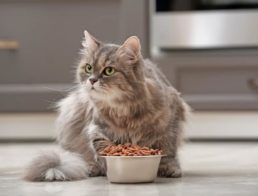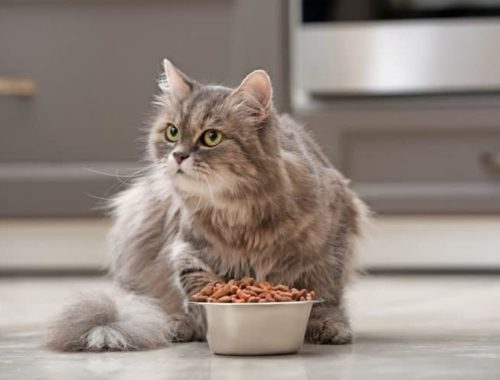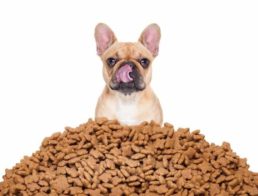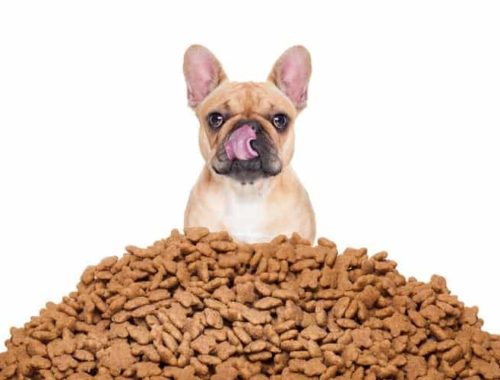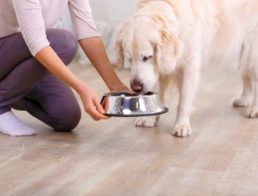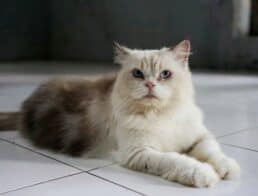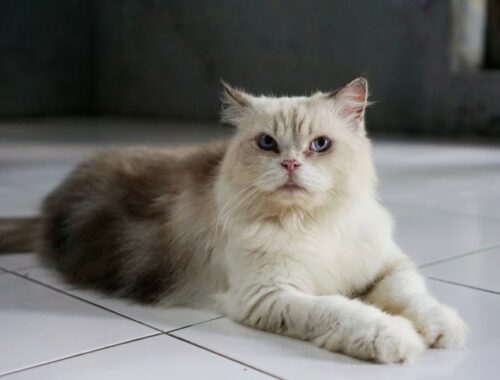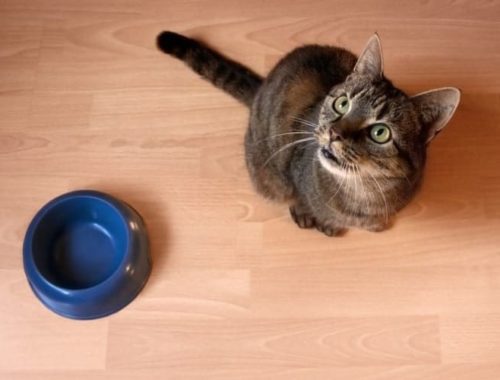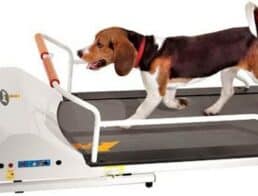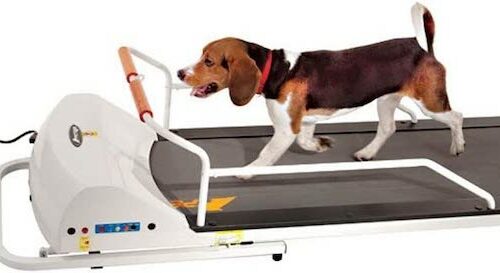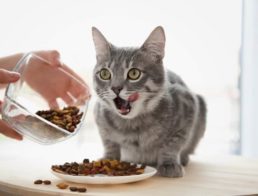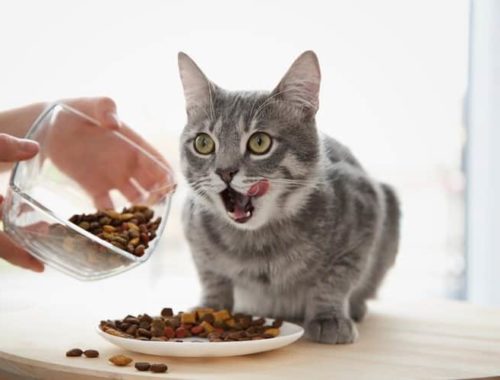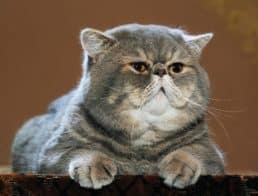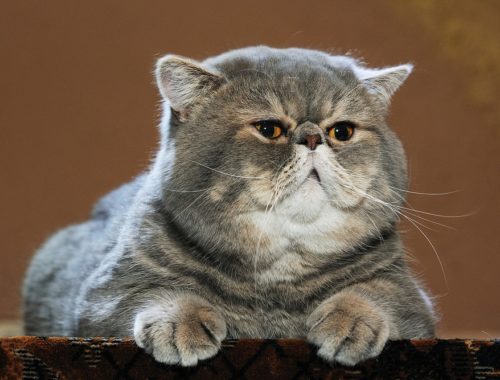The obesity epidemic in cats has mirrored the epidemic in the human population in industrialized countries. Cats that were once hunters for vermin and insect control are now living the good life inside of our homes.
While there are many benefits to having cats in our homes – improved lifestyle and longevity, safety, companionship and pest control, among others – a major disadvantage is the lack of daily exercise that outdoor foraging provides. Meals that were once small and numerous (birds, mice, and insects) have transitioned to the all-day-kibble buffet.
Our lifestyle has changed in concert with our feline companions. Many careers are sedentary, with long hours in the office, and provide no inherent exercise component. In addition, we reach for fast food, prepared frozen meals and snacks from vending machines to get us through each day. As a result, the rates of high blood pressure, heart disease, and diabetes are rising.
Overweight cats are prone to developing diabetes later in life, just like their sedentary owners. We know what to do for ourselves (eat better, eat less, move more), but what do we do for our roly-poly feline friends?
Assess the Damage
- How many extra pounds is he carrying? The best way to answer this question is to consult a veterinarian. He or she can provide you with a target healthy weight. You can use a body condition scoring system to get you started. A nine-point scale is commonly used, with 1 through 3 underweight, 4 and 5 ideal, and 6 through 9 overweight. There are charts available online, but you can get a rough estimate of your cat’s body condition score by looking at two attributes:
- Ribs– You should be able to feel the ribs. If you cannot see or easily feel them, body condition is a 7 or more.
- Waist– A cat’s waist is best seen from above and is located just behind the ribs. If you cannot tell where the ribs end and the waist begins, body condition is a 6 or more. From the side, the abdomen should be slightly tucked leading to the back legs. If not tucked at all, the body condition is a 7 or more.
Bottom line is – if you cannot feel ribs and see a waist, your cat needs to lose weight.
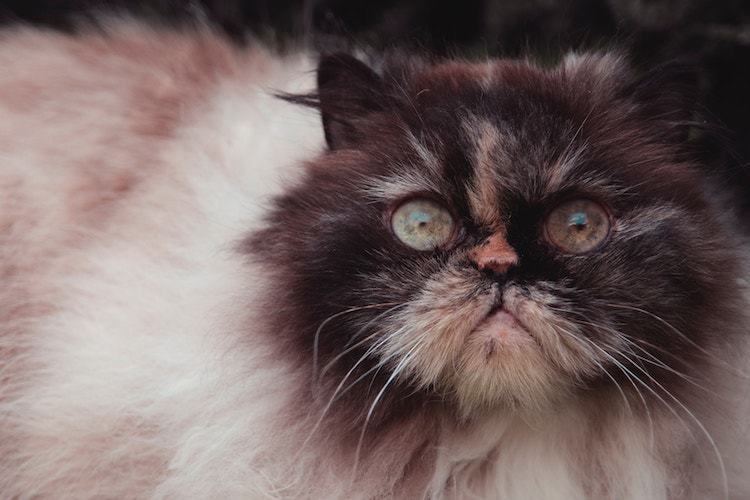
- Does she have any medical conditions related to obesity? Again, consult your veterinarian. Common conditions include diabetes as previously mentioned, arthritis and lameness, back pain and skin problems. These conditions may improve with weight loss but need to be considered prior to dietary changes.
- How much exercise does he get daily? Is your cat completely sedentary, sleeping 23.5 hours a day, or does he want to climb and play? Increase in activity level will be discussed further but for now, do an honest assessment of what your cat is willing to do.
Assess the Diet
Now that you have an idea of the what and why of weight loss, let’s look at how to make it happen. Weight loss only occurs if the calories consumed are lower than the calories spent. The following steps are useful in assessing your cat’s current diet.
- Measure! Get everyone in the house who feeds the cat to measure the food, every day, at every meal. Many owners love to dump a large amount of food in the bowl every day. Most cats love to nibble at the all-day-buffet, leading to weight gain.
- Read labels! Check out your food bag or cans. Dry cat food bags have a feeding guide, although in many cases, the amount of food needed daily is overstated since it does not take into account the sedentary nature of indoor cats. As a general rule of thumb, daily intake of dry food for the average 10-pound cat should be between 1/2 and 2/3 cup. If canned food is fed, dry food should be decreased accordingly.
Make It Happen
Below are some ideas for helping your feline friend shed a few pounds and keep them off. You may not need to implement them all, or all at once, but making even one or two changes will improve your cat’s health and longevity.
- Select a high-quality weight loss diet. Canned food is often excellent for weight loss, as it contains fewer carbohydrates. If selecting an all canned food diet, teeth brushing will be necessary. Dry food formulated for weight loss is also a good option. I recommend the following brands: Science Diet Adult Light, Purina ProPlan Focus Weight Management and Royal Canin Weight Care.
- Measure and feed multiple meals. Measure the food daily and split the meals into at least two portions. You can also consider a programmable automated feeder such as PetSafe 5-Meal Pet Feeder to deliver frequent smaller meals.
- Provide enriching activities. This is a fancy way of suggesting play. Laser pointers, scratching pads or posts, condos and interactive toys are excellent choices for increasing activity and interaction in indoor overweight cats.
Helping your cat achieve and maintain a healthy weight will decrease the incidence of illnesses such as diabetes and arthritis and will improve quality of life. Pango Pets wishes you success in your feline weight loss journey. Ciao meow!
